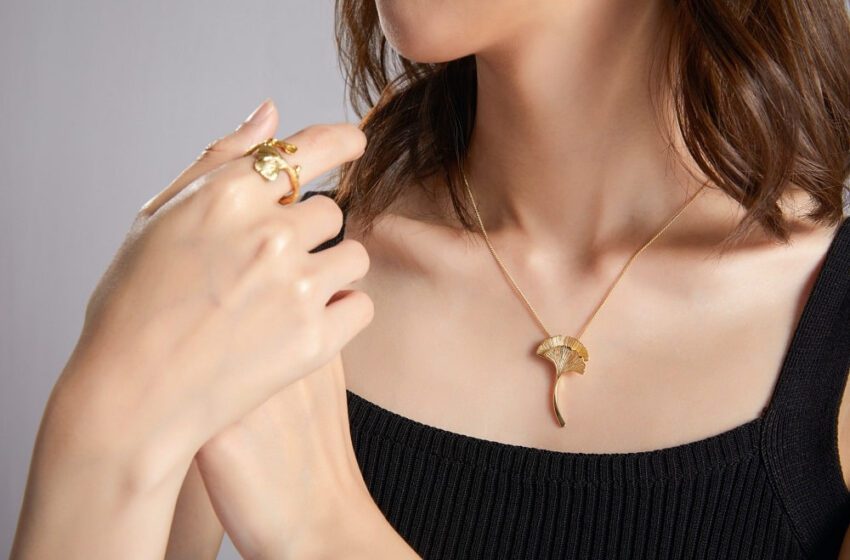
Real Necklace: How to Spot a Fake Necklace and Avoid Being Scammed
How we present ourselves visually often plays a significant role in shaping others’ perceptions and our self-confidence. The way we look, from our attire and grooming to our body language and facial expressions, carries powerful messages that people interpret instinctively. Incorporating jewelry, especially a necklace, into your fashion choices can be a powerful way to enhance your overall appearance. Whether it’s a delicate pendant, a statement piece, or a symbol of personal significance, a necklace can effortlessly elevate any outfit and make a lasting impression. However, for this to happen, it is vital to ensure that the necklace is authentic.
Check the Authenticity of Materials
Genuine necklaces made of gold, silver, or other precious metals should bear appropriate hallmarks or stamps indicating their purity. Similarly, authentic gemstones such as diamonds, rubies, or emeralds should have certifications or be evaluated by a reputable gemologist. It’s essential for buyers to educate themselves about the characteristics of genuine materials and seek professional advice if needed to avoid falling victim to scams and ensure they are purchasing a legitimate piece of jewelry.
Evaluate the Price
Researching the average market value of similar necklaces can give the buyer a baseline understanding of the price range. If a necklace is offered at an unusually low price that seems too good to be true, it should raise suspicions. Counterfeiters often lure unsuspecting buyers with significantly discounted prices to deceive them. By being aware of the typical pricing and being cautious of deals that appear too good to be true, buyers can protect themselves from scams and ensure they get a fair deal when purchasing a necklace.
Check the Brand Reputation
When purchasing a necklace, it is advisable for buyers to do so from well-known and reputable jewelers or brands. Counterfeiters often imitate popular designs, so purchasing from trusted sources reduces the risk of buying a fake necklace. Recognized brands have invested years in building their reputation, which stems from consistently delivering quality products and maintaining customer satisfaction. However, this reputation can also be exploited by counterfeiters who mimic popular designs and attempt to deceive unsuspecting buyers.
Analyze the Workmanship and Quality
Authentic necklaces are typically crafted with meticulous attention to detail and exhibit fine craftsmanship. When examining a necklace, buyers should pay close attention to the finishing, edges, and overall construction. Poor craftsmanship, on the other hand, can indicate a fake necklace. Thus customers have to look for signs of poor workmanship, such as rough or uneven edges, visible glue, or loose stones. Genuine necklaces will generally display a high level of precision and quality in their design and construction.
Check Weight and Density
Materials like gold or silver have a certain weight and density that counterfeit versions often fail to replicate accurately. When handling a necklace, the buyer should compare its weight to similar pieces they are familiar with. If it feels unusually light or flimsy, it may indicate that the necklace is a fake. Additionally, buyers should consider the density of the necklace. A real necklace will tend to have a substantial and solid feel, while a fake one may feel hollow or lack the expected weight.
Check the Clasps and Fasteners
Authentic necklaces usually feature well-made and sturdy closures that ensure durability and security. Buyers have to inspect the clasp closely, looking for signs of quality craftsmanship. Genuine clasps are typically smoothly finished, with secure mechanisms that function properly. On the other hand, counterfeit necklaces often have cheap or poorly constructed clasps that may be flimsy, loose, or difficult to open and close. A poorly made or suspicious clasp should raise concerns about the overall quality and legitimacy of the piece.
Analyze the Seller’s Credibility
Before making a purchase, buyers need to research the seller or retailer by Looking for online reviews, ratings, and customer feedback to gauge their reputation. Reputable sellers will have positive reviews and a transparent track record. Buyers also have to be aware of sellers with numerous complaints, negative feedback, or a lack of information about their business. Legitimate sellers are often transparent about their products, sourcing, and certifications. They are also more likely to provide detailed product descriptions, including information about materials, dimensions, and any accompanying documentation.
Ask Questions
Engaging with the seller or retailer allows the buyer to seek clarification on aspects such as materials used, certifications, or any other concerns. The buyer should ask about the necklace’s origin, authenticity, and proof of purchase. They should also inquire about the warranty or return policy to ensure they have recourse if the necklace turns out to be fake. Legitimate sellers will be responsive and forthcoming with information, whereas dubious sellers may avoid or provide evasive answers. By asking relevant questions, the buyer demonstrates their interest in the product’s authenticity and gathers valuable insights to aid in their decision-making process.
In today’s jewelry and necklace market, the prevalence of fake products and unscrupulous individuals seeking to exploit unsuspecting buyers has become a significant concern. This rise in counterfeit jewelry is a result of advancements in technology and the increasing demand for luxury items. With the ability to produce convincing replicas, fraudsters have found ways to exploit the market, leaving consumers vulnerable to deceptive practices. But by understanding what to look for, one can make informed decisions and avoid falling victim to scams. This awareness empowers individuals to seek out authentic necklaces and ensures that their hard-earned money is invested in genuine pieces, offering both value and peace of mind.
More Read On Ouji Fashion
